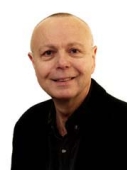Aesthetics and Cognition
Aesthetics and Cognition
Principal investigators
Abstract
The aim of the project was to study the development of a specific anthropology and aesthetic within Christian Orthodox theology. The project was centred on the Cappadocian Church Fathers (4th century AD), in particular Gregory of Nazianzus, and their impact on subsequent Byzantine theologians, such as Dionysios the Areopagite (ca. AD 500) and Maximus the Confessor (7th century AD).
Cappadocian anthropology represented something new: it was based on the mystery of the Incarnation and on the theology of the Trinity as it was worked out by the Cappadocians. A central concern of the project was the role of the Cappadocians for Byzantine aesthetics and the theology of the icon, an aspect of Orthodox tradition that sets it apart form Judaism and Islam as well as from Western theology. The Orthodox doctrine of the deification of man has left deep traces in the anthropology of all Orthodox peoples, not least in Russia; in the novels of Dostoevsky and Pasternak, for instance, this idea still determines the representation of the characters. By studying key texts of these leading Greek thinkers, the project set out to illuminate the relationship between anthropology and aesthetics in the early Orthodox tradition. For this purpose, we brought together an international group of experts on various aspects of the period from the mid-fourth to the mid-seventh century AD: history, literature, philosophy, and theology. Each of us singled out for study a limited set of Greek texts central to our aims - with the three Cappadocians as the key authors - and worked intensively with these texts, both individually and in interaction with the other members of the group, studying the constitutive concepts and their background and development. Our work was thus first and foremost based on the study of texts. Our stated ambition was not to arrive at a totally new and comprehensive picture of this creative phase in the history of Orthodox theology, but rather to amplify, differentiate, and put into perspective the picture outlined briefly above.
Fellows



